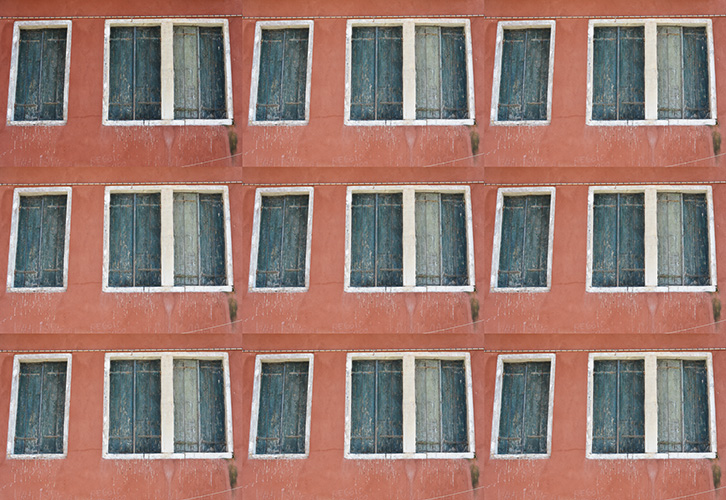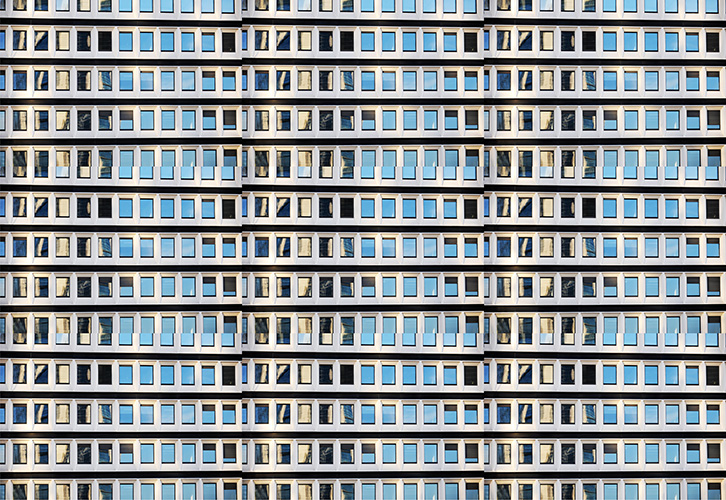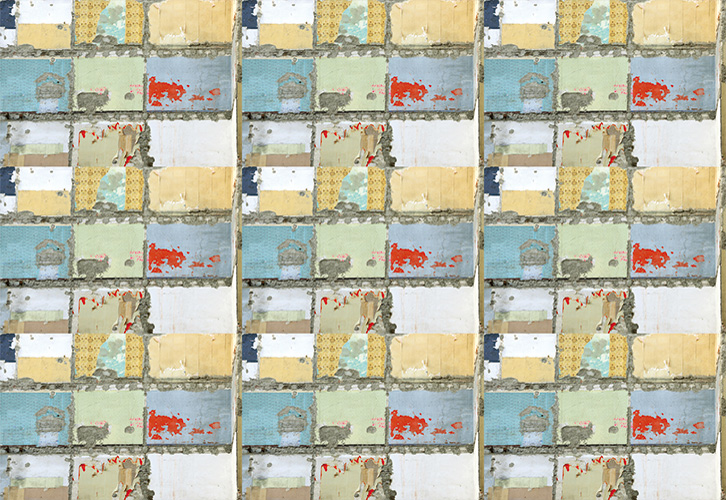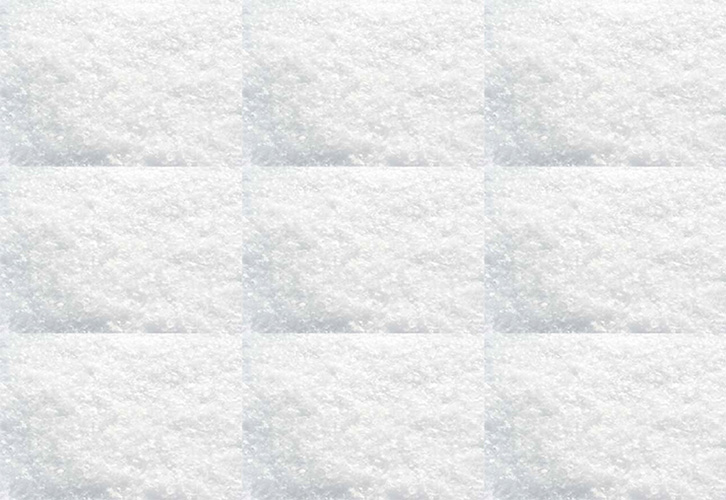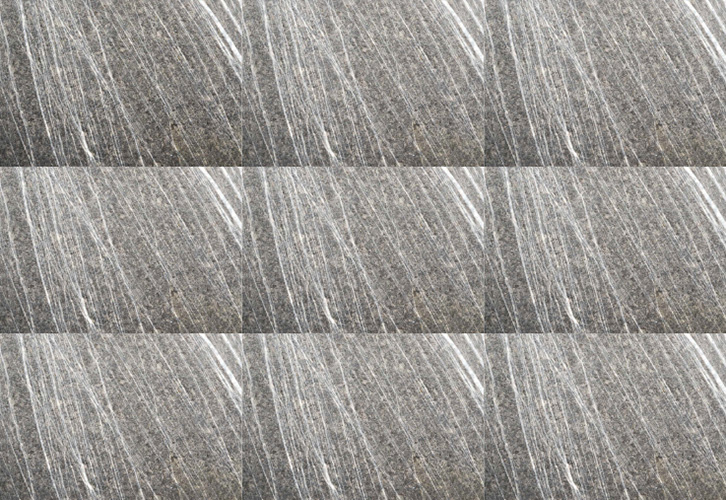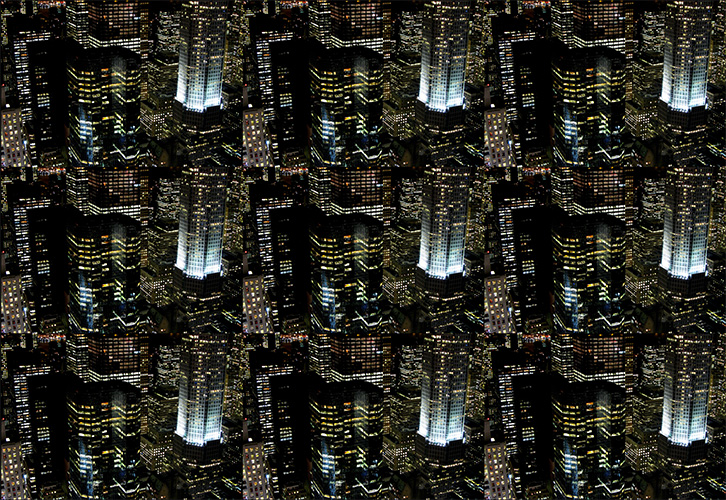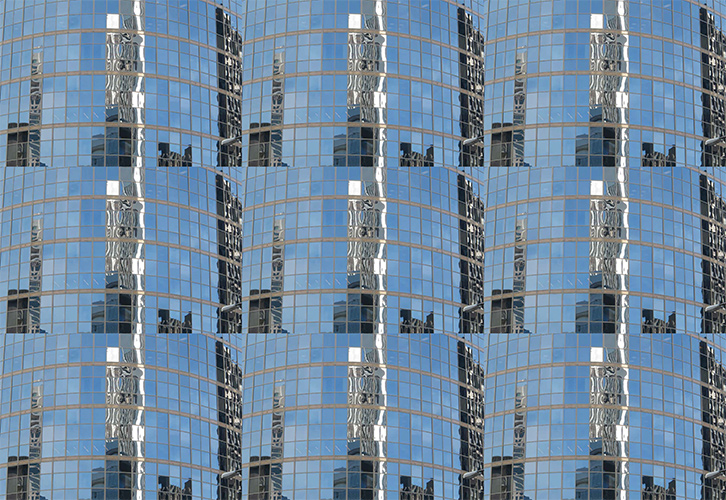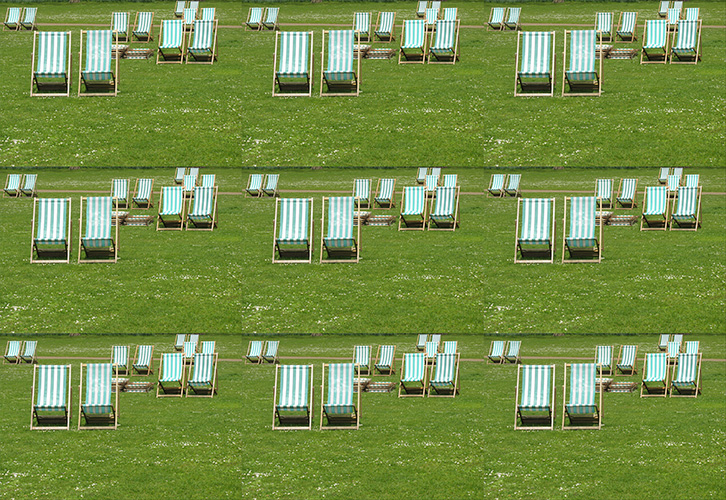Roberta Valtorta - Museo di Fotografia Contemporanea Milano
Interestingly similar to works of optical art and images created by a kaleidoscope, the photographic compositions by Andrea Rovatti portray simultaneously the rigorous mechanical recordings of urban details and their imaginary transfiguration. The result is a number of images characterized by a strong graphic and photographic content. The repetition of a detail from the urban landscape generates false sequences where time no longer exists: no change occurs, no visual displacement is possible, every movement is frozen. (...) The prevalent repetition of fragments is an accurate and precise cloning process, generating the composition in response to what could be defined an 'optical illusion'. In fact, the peculiarity of Rovatti's photographic genre develops into a rather sharp detachment from reality. Reflecting on the idea of the modularity, it is possible to observe how the repetition of the same element represents a fundamental aspect of industrialization and of the 'society of machines' that has shaped the world and our lives through the criterion of seriality.
Campbell's Soup to Ed Ruscha's Service Stations, as well as from the Anonymous Sculptures by Bernd and Hilla Becher to Jan Dibbets' Sequences, the idea of modularity is a recurrent and important one.
Rovatti's chessboards and the complex textures closely connected to graphics are also somewhat reminiscent of Escher's optical illusions. Both share the same concept of displacement towards reality that, although tempered by the pleasantness of shapes and colours, yet leaves the viewer dazzled and confused. Additionally, Rovatti's compositions are a challenge to architecture: the representation of spaces and structures designed for artificial landscapes and for a global society, are created through the use of dense textures, networks, links, reflections. Impossible places, but rather possible.
